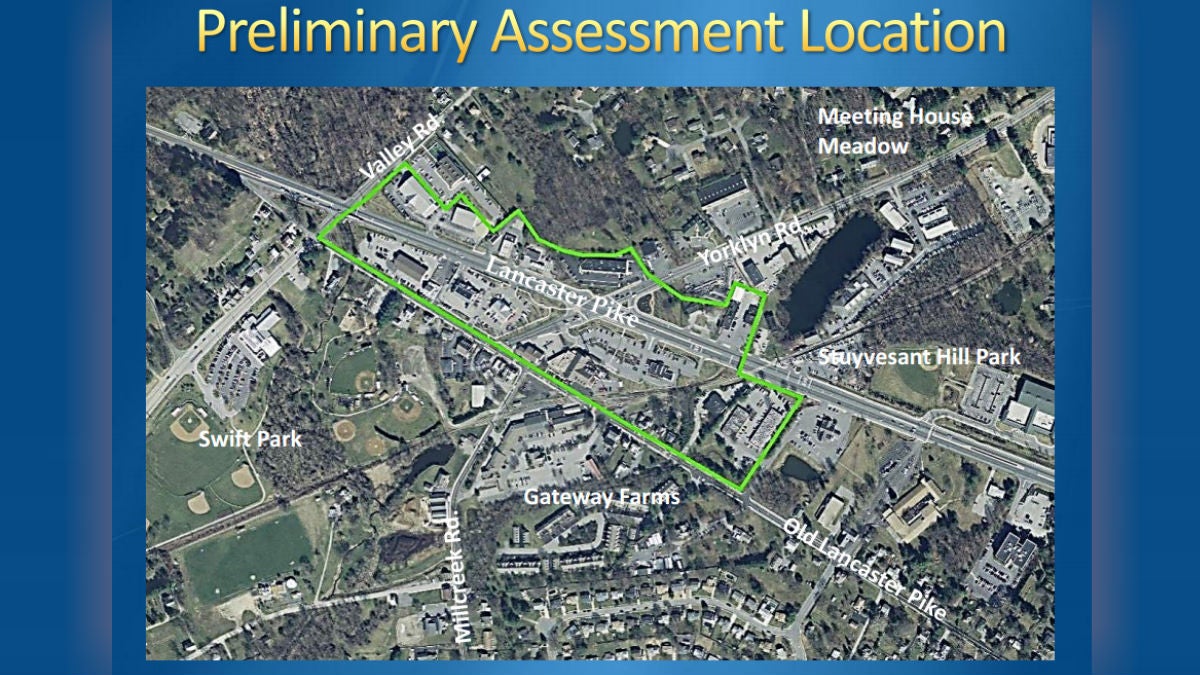DNREC, EPA update Delaware residents on water contamination

This map shows the area impacted by water contamination in nothern Delaware. (DNREC photo)
DNREC and the EPA updated Hockessin residents on cleanup efforts at the Hockessin Ground Water Plume Site.
Representatives from Delaware’s Department of Natural Resources and Environmental Control and the U.S. Environmental Protection Agency ensured Hockessin residents Monday that their drinking water is safe amid efforts to address contamination issues at the Hockessin Ground Water Plume Site.
DNREC, EPA and the Delaware Division of Public Health updated the public about the years-long evaluation and remediation process during a Greater Hockessin Area Development Association meeting.
Officials attempted to put residents’ minds at ease that the issue is being addressed, but said long-term solutions may need additional support from the federal government.
“We want to ensure everyone has safe drinking water, we want to ensure that people that are provided water from Artesian [water company] or have private drinking water wells, have safe drinking waters that do not pose a health hazard to them,” said Tim Ratsep, program administrator for DNREC’s site investigation and restoration section.
“We have to do the evaluation, we have to find out where the sources are, we have to get the sources out of there so concentrations don’t increase, and where it has increased to address them so they go in the opposite direction.”
Back in 2005, Artesian Water Company, which provides and treats public drinking water, found small levels of contamination in its Hockessin water well during routine sampling.
DNREC then began to evaluate the impacts of the contamination, as well as potential sources of the contamination. The agency identified nine area businesses as possible sources of contamination.
Beginning around 2014, DNREC found tetrachloroethylene (PCE), which is mostly used as a dry-cleaning solvent and industrial degreaser, in a commercial irrigation well, three residential wells and several public supply wells in the Artesian Water Company’s Hockessin well field.
Prolonged exposure to the contaminant can cause adverse human health effects, including neurological disorders and cancer.
DNREC installed water treatment systems at the three residential properties impacted by the VOC contamination.
Artesian Water Company said it tests the water monthly, and DNREC officials say it meets federal and state safe drinking water standards.
“All the Artesian wells have carbon treatment on them, and they meet federal and state safe drinking water standards, and the routine sampling occurs on a regular basis,” Ratsep said.
“The private wells in the half mile radius of the facility have been sampled. There were three locations we did find had low level impact material from the facilities and the state put treatment systems on those, so those wells are safe to drink also.”
DNREC focused much of its investigation on evaluating dry cleaners in the area, and believe Hockessin Cleaners and Sunrise Cleaners are the main sources of the PCE contamination.
Ratsep said prior to regulations, cleaning materials containing compounds often were dumped outside, contaminating the soil and in turn, the water. Sunrise Cleaners is paying for an active remediation.
The EPA also updated the public on its investigation of the Hockessin Ground Water Plume Site, which it began last year.
The EPA is using its Superfund authority and resources to determine if the site needs a long-term investigation and cleanup. During the meeting EPA and DNREC said the site could be listed on the National Priorities List, making it eligible for remedial action financed under the federal Superfund program. Long-term treatment of the contamination would cost millions of dollars, and could not be supported by the state alone.
If the site is put on the NPL, there will be several weeks of public information and comment sessions.
WHYY is your source for fact-based, in-depth journalism and information. As a nonprofit organization, we rely on financial support from readers like you. Please give today.





